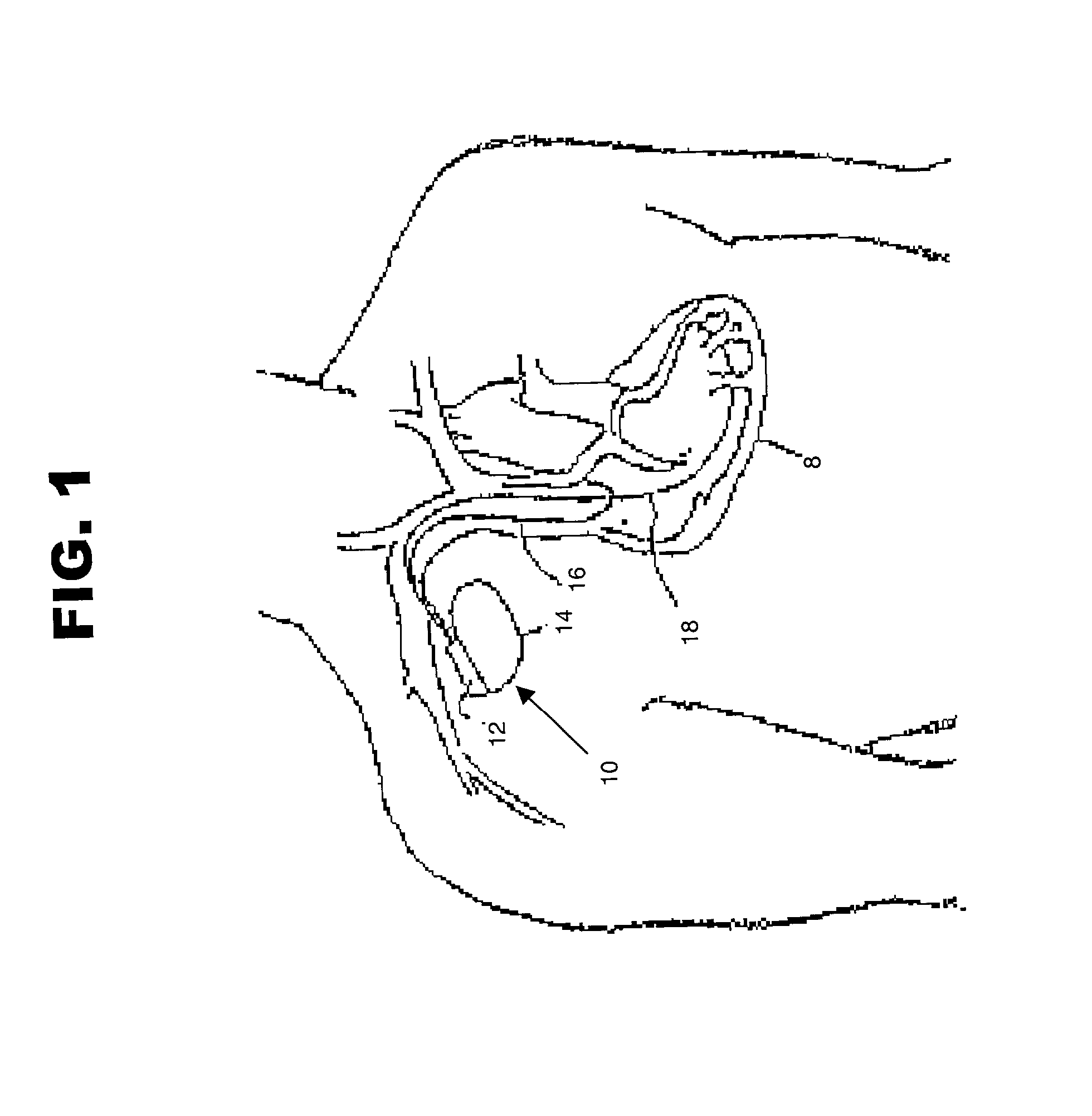Method and system for discriminating captured beats from non-captured beats in a cardiac pacing system
a cardiac pacing and beat discrimination technology, applied in the field of methods and systems for discriminating captured beats from non-captured beats in cardiac pacing systems, can solve problems such as the inability to discriminate between captured beats
- Summary
- Abstract
- Description
- Claims
- Application Information
AI Technical Summary
Benefits of technology
Problems solved by technology
Method used
Image
Examples
Embodiment Construction
[0032] The term "captured beat" appearing herein may indicate a successfully evoked response to stimulation from a pacing pulse, particularly in cardiac tissue. Conversely, the term "non-captured beat" appearing herein may indicate an unsuccessfully evoked response to stimulation from a pacing pulse, e.g., the stimulation does not evoke any response.
[0033] FIG. 1 is a simplified schematic view of one embodiment of implantable medical device ("IMD") 10 of the present invention. The IMD 10 shown in FIG. 1 is a pacemaker comprising at least one of pacing and sensing leads 16 and 18. Leads 16, 18 may be attached to hermetically sealed enclosure 14 and may be implanted near human or mammalian heart 8. Pacing lead 16 and sensing lead 18 may sense electrical signals attendant to the depolarization and re-polarization of the heart 8, and further provide pacing pulses for causing depolarization of cardiac tissue in the vicinity of the distal ends thereof. Leads 16 and 18 may have unipolar or...
PUM
 Login to View More
Login to View More Abstract
Description
Claims
Application Information
 Login to View More
Login to View More - R&D
- Intellectual Property
- Life Sciences
- Materials
- Tech Scout
- Unparalleled Data Quality
- Higher Quality Content
- 60% Fewer Hallucinations
Browse by: Latest US Patents, China's latest patents, Technical Efficacy Thesaurus, Application Domain, Technology Topic, Popular Technical Reports.
© 2025 PatSnap. All rights reserved.Legal|Privacy policy|Modern Slavery Act Transparency Statement|Sitemap|About US| Contact US: help@patsnap.com



